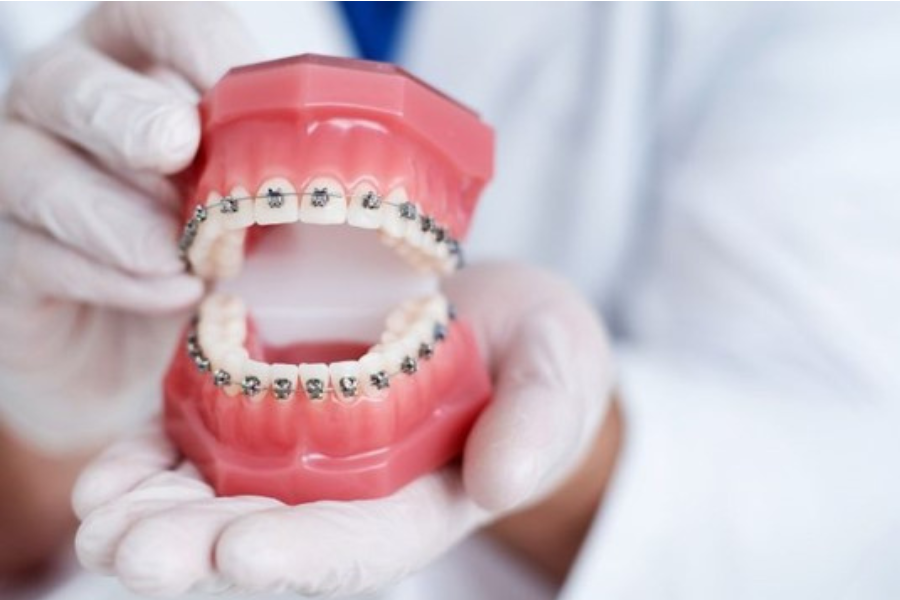What Are the Advantages of Dental Braces?
Dental braces are a widely used orthodontic treatment designed to correct misaligned teeth, improve oral health, and enhance a person’s smile. Many individuals, from children to adults, opt for braces to fix crooked teeth, overcrowding, bite issues, and gaps. With advancements in orthodontics, braces have become more effective and comfortable. In this article, we will explore the various advantages of dental braces and how they can benefit individuals seeking a healthier and more aesthetically pleasing smile.
- Improved Dental Alignment
One of the primary benefits of braces is the ability to correct misaligned teeth. Crooked or overlapping teeth can cause discomfort, make chewing difficult, and affect overall oral health. Braces gradually shift teeth into their proper position, ensuring a straighter and well-aligned smile.
- Enhanced Oral Health
Misaligned teeth can be challenging to clean properly, leading to plaque buildup, tooth decay, and gum disease. Braces help align teeth, making brushing and flossing more effective. When teeth are in the right position, there is a reduced risk of cavities and other oral health problems.
- Correction of Bite Issues
Braces not only straighten teeth but also correct bite issues, such as overbites, underbites, crossbites, and open bites. An improper bite can cause jaw pain, difficulty chewing, and excessive wear on certain teeth. Braces help achieve a balanced bite, reducing strain on the jaw and preventing long-term dental problems.
- Prevention of Tooth Wear
When teeth are misaligned, certain teeth may endure excessive wear and tear due to uneven pressure during chewing. Over time, this can lead to enamel erosion, sensitivity, and even fractures. Braces help distribute biting force evenly, preventing premature tooth wear and damage.
- Better Speech Clarity
Misaligned teeth can sometimes cause speech difficulties, such as lisping or difficulty pronouncing certain words. By correcting tooth positioning, braces can improve speech clarity, making communication more effective and boosting self-confidence.
- Increased Confidence and Self-Esteem
A straight, attractive smile can significantly impact a person’s confidence and self-esteem. Many people feel self-conscious about their crooked or gapped teeth. Braces help create a beautiful smile, leading to a positive self-image and improved social interactions.
- Prevention of Future Dental Problems
Correcting alignment issues with braces can prevent future dental complications, such as temporomandibular joint (TMJ) disorders, jaw pain, and difficulties in chewing. Properly aligned teeth contribute to overall dental stability, reducing the need for extensive dental treatments later in life.
- Customizable Treatment Options
Modern orthodontics offers various types of braces to suit different needs and preferences. Traditional metal braces, ceramic braces, lingual braces, and clear aligners like Invisalign provide patients with multiple choices. This flexibility allows individuals to choose a treatment option that aligns with their lifestyle and comfort.
- Suitable for All Ages
While braces are commonly associated with teenagers, they are effective for people of all ages. Adults who missed orthodontic treatment during childhood can still benefit from braces to achieve a straighter and healthier smile.
- Improved Digestion
Properly aligned teeth play a crucial role in effective chewing and digestion. When teeth are misaligned, chewing food becomes less efficient, leading to digestive issues. Braces help ensure that food is broken down properly before reaching the stomach, promoting better digestion and nutrient absorption.
- Long-Term Investment in Oral Health
Although braces require an initial investment, the long-term benefits outweigh the costs. Properly aligned teeth reduce the risk of dental complications, saving money on future treatments such as fillings, extractions, and gum disease management. Orthodontic treatment is a long-term investment in maintaining a healthy smile for life.
- Improved Facial Aesthetics
Braces not only enhance the appearance of teeth but also contribute to better facial symmetry. Properly aligned teeth and a balanced bite can improve jaw structure, enhancing overall facial aesthetics.
- Increased Comfort Over Time
Initially, braces may cause discomfort, but as teeth gradually move into their correct positions, patients experience increased comfort. Many individuals find that their teeth feel more natural and comfortable after completing their orthodontic treatment.
- Supports Long-Term Tooth Stability
When teeth are crowded or misaligned, they may shift over time, leading to further complications. Braces help establish long-term stability by positioning teeth correctly, reducing the likelihood of future misalignment.
Dental braces provide a wide range of benefits, from improved oral health and speech clarity to increased confidence and long-term dental stability. While orthodontic treatment requires time and commitment, the results are well worth the effort. Whether for children, teenagers, or adults, braces offer an effective solution for achieving a healthier, more beautiful smile. If you are considering braces, consult with an orthodontist to explore the best treatment options for your specific needs. Investing in braces is not just about aesthetics—it’s about ensuring a lifetime of optimal oral health and well-being.



